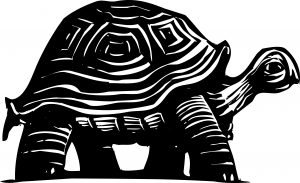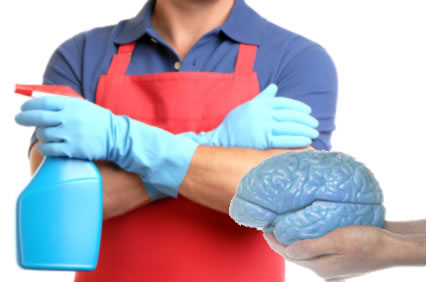
© istock photo
Ok, I hold my hand up (the good one, lol), I’m so guilty… always in a rush, caught in the “fast – track”, that is up until now when life’s cruel circumstance has forced me to slow-down.
Slow down and enjoy life. It’s not only the scenery you miss by going fast- you also miss the sense of where you are going and why
-Eddie Cantor
Slow movement is the key to the awareness of movement.
Awareness of movement is fundamental to improving movement.
It is is our brain that organizes and decides how we will perform any movement or action. The brain maps our movement from a multitude of our experiences from the time we are born, through this process the brain grows billions of new connections and builds our self -image. Any movement we perform is a brain/body movement…for example when we raise our hand, its not only the hand that the brain has to organize- it has to know where every part of the body is in space and the dynamic relationship between different parts of the body at all times.
As a result of stroke, a part of my brain has been destroyed, consequently the connections in my brain that were responsible for movement and sensation in the left side off my body no longer are getting the right message… I have muscle weakness and muscle stiffness (also known as spasticity), and altered sensation.
I am hopeful that the Anat Baniel Method will guide my brain (thanks to its neural plasticity) to focus on the different areas of my body, and form new connections that will enable me to recover and organize the basic and more complex movements that I have lost.
I started this process last Monday with NeuroMovement for Whole Body Fitness.
I felt quite excited as I began the first lesson. The lessons so far take place lying down, no fighting gravity here! I brought my full attention, and listened carefully….. move slowly, pay attention to how you are feeling, be gentle don’t force movements, don’t go into pain, avoid doing movements that you find difficult or are unable to do at the moment.
There is so much to focus on…. my mind is busy and this does not come naturally to me. I now understand why I’ve been told to do this in the evening, not after therapy or exercise. A quiet mind and environment is important for the practice.
The second lesson brought a different challenge. The pain in my shoulder interferes so much that I am not able to physically do this movement, and so as Anat suggests I visualise the movements.Thinking and doing are the same in the brain. The same brain regions that are activated when completing a motor skill are activated when mentally rehearsing the same task. This technique is difficult, and will take some practice! The carry over from this however, is that I am beginning to now find myself visualizing tasks that I struggle with, throughout the week.
By the time I reach the third lesson (the pelvic clock) and the end of the week, I do believe things are starting to make a bit more sense. This lesson follows a physiotherapy session that I had earlier that day, where my therapist worked on my very stiff misaligned pelvis, ribs and shoulders.
I am now beginning to direct my focus, on how movement feels, much more successfully.
Am I seeing changes yet? Honestly not yet.The subtlety of each movement takes a lot of attention. But then I am only 3 lessons and 1 week in.
As I move into lesson number 4 today and my second week of doing this method, I am finding that I am starting to sense movement more as a whole body experience. I am consciously experiencing movement more now, even when I am participating in my traditional physiotherapy.
Practice makes perfect….. Oh yes, I am going to need a lot of practice!
* I want to caution anyone reading my account, that I am no medical expert, I am writing this as a personal account of how stroke has affected me, and its my journey of recovery.


